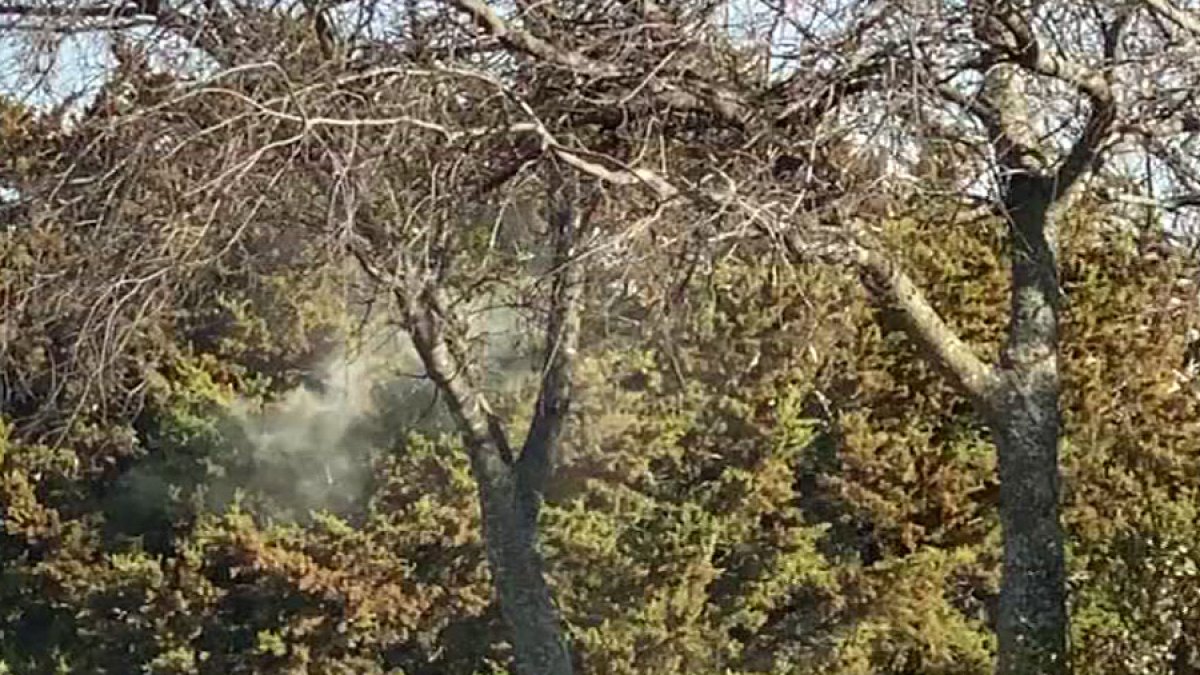
In video sent to iSee@nbcdfw.com from Diane Smedley in Aledo, a plume of pollen can be seen coming from cedar trees in her yard. We slowed the video down, and slowed it down again so that you could see the pollen clearly.
It's that time of year again: Watery eyes, runny nose, and lots and lots of sneezing all thanks to "cedar fever."
Specifically, mountain cedar, which is also known as Ashe juniper. Mountain cedar season runs from late December to February, so, unfortunately, it's just getting started.
NBC 5 viewer Diane Smedley of Aledo shared the video above, where you can see the cloud of pollen erupt from the tree.
"Well I woke up sneezing this morning and as I was looking out the window at this old mature cedar tree, kept seeing these puffs of smoke," said Smedley. "I had no idea what it was, at first I thought it was fog, and then realized it's pollen!"
Put simply, cedar fever is an allergic reaction to cedar pollen in the air. Something allergy sufferers know too well.
Symptoms of cedar fever include sneezing, itchy, watery eyes, runny nose, sore throat and fatigue as well as aches and pains.
Those symptoms sound like coronavirus right?
Weather Connection
Connecting you with your forecast and all the things that make North Texas weather unique.
While it doesn't actually cause fever, the inflammation and triggering of your immune system associated with allergies can raise your temperature, but not above 101° -- if you have a high fever, or you lose your sense of taste or smell, you should get tested for COVID-19.
Smedley is looking forward to the rain, and she's right to hope for precipitation, a strong north wind, as well as staying indoors and changing your air filters can help.
Over-the-counter antihistamines, nasal decongestants and nasal sprays can also help.
A map published by Texas A&M Forest Service shows where juniper trees are most prevalent. Clearly, the highest concentration is to the southwest of the Dallas-Fort Worth area.
"Cedar fever is the worst west of I-35, where you have primarily juniper mixed in with oaks and some other species," said Jonathan Motsinger, the Central Texas Operations Department Head for Texas A&M Forest Service. "And because all of those junipers are producing pollen at the same time, you're going to get a higher concentration of pollen in the air."